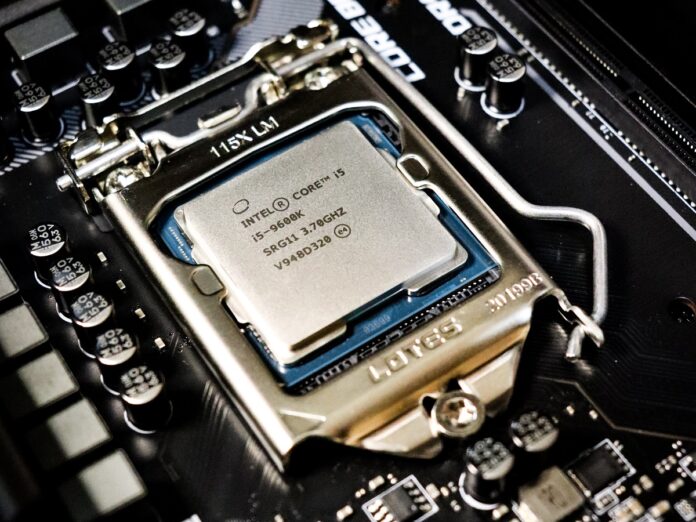
Disclaimer | This article may contain affiliate links, this means that at no cost to you, we may receive a small commission for qualifying purchases.
Finding the best laptop for architects is not an easy task, but finding one for architecture students is even harder.
The main reason for this is that many variables are involved in selecting a machine that can deliver excellent performance without being too costly. These variables include the processing power, graphics processing capabilities, compatibility with various software applications, the operating system to be used, and many others.
One of the main questions that architecture students have is whether a computer with an Intel i5 processor is good enough for their requirements. Unfortunately, it does not have a very straightforward answer, and we will need to go into some details to answer it.
And that’s what we’ll be doing here in this guide while also explaining some additional factors to keep in mind when considering various options. This will help you make an informed choice when buying a laptop. So, let’s get started!
Intel Core i5 Vs i7 Processors

The i series of processors from Intel is among the most well-known in the world and includes four main processors, including the i3, i5, i7, and i9 processors. Since the i3 is a starting-end processor, it isn’t powerful enough to meet the needs of architecture students.
On the other hand, the i9 is an extremely costly option and is often not required for most tasks that an architecture student may need to perform. That leaves us with the i5 and i7 processors.
The i5 is a mid-range processor often found in many gaming laptops due to its impressive performance. However, since architectural studies generally require running multiple heavy applications simultaneously, at times, this processor can struggle to keep up with the load.
That’s why for such purposes, an i7 might seem like the perfect option. Before the launch of the i9 processor, the i7 was the top-end model from intel, designed for the heaviest tasks. It can easily handle multiple computing tasks, especially when paired with an adequate amount of RAM, and is ideal for running architectural software.
But, as explained above, things are not as simple as there is another factor to consider: the differences between successive generations of processors.
Difference In Processor Generations
The latest generation of processors, namely the 12th generation of processors from Intel, are incredibly powerful, offering significant performance improvements over the previous generation.
This means that even a mid-range processor from the latest generation, such as the i5, can match or even outperform a superior processor from the previous generation. So, while the latest intel core i7 processor may offer better performance, the i5 one offers better value and will be cheaper than both the previous and current-gen i7 options.
That is why when choosing a laptop for architecture students, you first should check which generation of processor it uses. Selecting an i5 12th-generation processor is better than an i7 10th gen one, but if possible, go with an Intel core i7 12th gen which can easily outperform both.
Number Of Cores And Threads
Modern processors generally have multiple cores, and each core has several threads that determine its performance. Traditionally, the i5 processor has had four cores and four threads, while the i7 has had four cores and eight threads.
In earlier days, this was enough for running even the heaviest software applications and could even meet the needs of a professional architect. With time, however, software applications have become even more demanding, which is why companies like Intel have been forced to upgrade their processors.
The latest 12th gen i5 processor comes with six cores and 12 threads, which can go up to 12 cores and 16 threads, making it a very powerful processor. In comparison, the 12th gen Intel core i7 processor has 12 cores and 20 threads, allowing it to easily run heavy operating systems like Microsoft Windows and multiple programs.
Generally, having more cores and threads results in better performance, though this also depends to some extent on the GPU and the disk. For architectural projects, a greater number of cores and threads can make it easy to run heavy programs like AutoCAD without the machine struggling.
But a good laptop with a processor having more cores is generally more expensive as well, so keep that in mind before making a decision.
Processor Variants
Another factor to consider when choosing between an i5 and i7 processor is the processor variant. There are multiple variants of processors available, such as:
H Series
H series of intel processors are only found in high-performance laptops, such as the Asus Zenbook Pro UX501 laptops for interior designers. These are perfect for running architecture programs and come with technologies like turbo boost.
G Series
G series processors have a powerful graphics unit and are generally found in machines designed for graphics-intensive tasks, such as gaming laptops. And these become even better when paired with a powerful GPU like the Nvidia GeForce RTX series.
U Series
The U series of processors are generally present in budget laptops as they are low-powered ones and generally unsuitable for running architecture software. These may not be the best option for running architectural applications.
K Series
These CPUs are unlocked for maximum performance, have a high clock speed, and are present in the best laptops on the market. Such high-end laptops may also have a powerful graphics processing unit along with other impressive features, such as a solid-state drive and a long battery life. They are excellent options for working in the architecture field.
When looking for the best laptop for architecture, it is recommended to go with laptops with either the H, G, or K series of processors. Such laptops generally also have a powerful dedicated graphics card and can run almost any Windows software easily, making them ideal for architectural students.
Besides these, there are other variants, such as X, C, T, F, etc., that you can look at.
Is i5 Good For Architecture Students Frequently Asked Questions ?
What Should Be The Specs Of A Laptop Meant For Architectural Studies?
What laptop specs do I need for architecture is a common question asked by many architecture students. And the answer to that question is that such a laptop should come with at least an i5 or i7 central processing unit and a dedicated graphics card.
It should also have some key features like SSD storage, LPDDR5 RAM, decent screen size and resolution and good battery life.
How Much RAM Should Laptops For Architecture Work Have?
A laptop should have at least 16GB of RAM for running software applications used in architecture. This will allow you to run multiple programs simultaneously without the machine slowing down or struggling with the workload.
If possible, go with a gaming laptop that can be upgraded easily. Most such laptops allow you to add more RAM in the future if required, thus making them future-proof to a certain extent.
Which Would Be The Right Laptop For Architecture Students, Apple MacBook Or Microsoft Surface Book?
Apple machines like the MacBook Air or the Apple MacBook Pro are incredibly powerful and can easily meet the needs of architecture students. They also offer impressive battery life and features like an HD display and are sturdier than most other laptops.
However, since these usually have a limited amount of RAM, at times, they may struggle in some tasks, especially those involving 3D rendering. They are also difficult to upgrade in the future.
On the other hand, the Microsoft Surface Book can be an excellent option if you are looking for Windows laptops. It has powerful internals, such as the Nvidia GeForce GTX GPU, a large screen, and high clock speeds, making it perfect for architectural work.

Is i5 Good For Architecture Students Final Thoughts
The processor is the main component that decides how powerful a computer is, and for students pursuing architecture courses, selecting the right laptop ultimately comes down to it. While both the latest generation i5 and i7 processors offer excellent performance, there is a considerable difference between their prices.
That’s why you need to consider the other factors we’ve mentioned when choosing between them. Apart from the processor, make sure to check other factors such as the GPU and the RAM before making a decision, as these also determine the overall performance.
Now, it is time for us to conclude this guide. Until next time!


